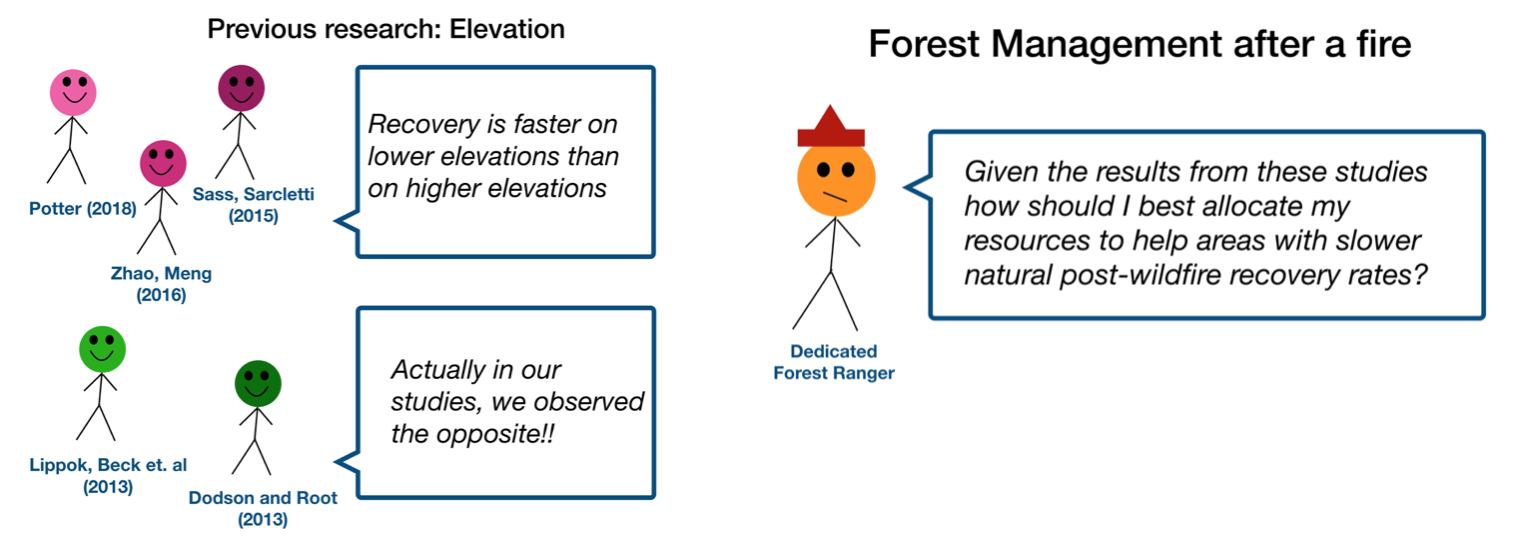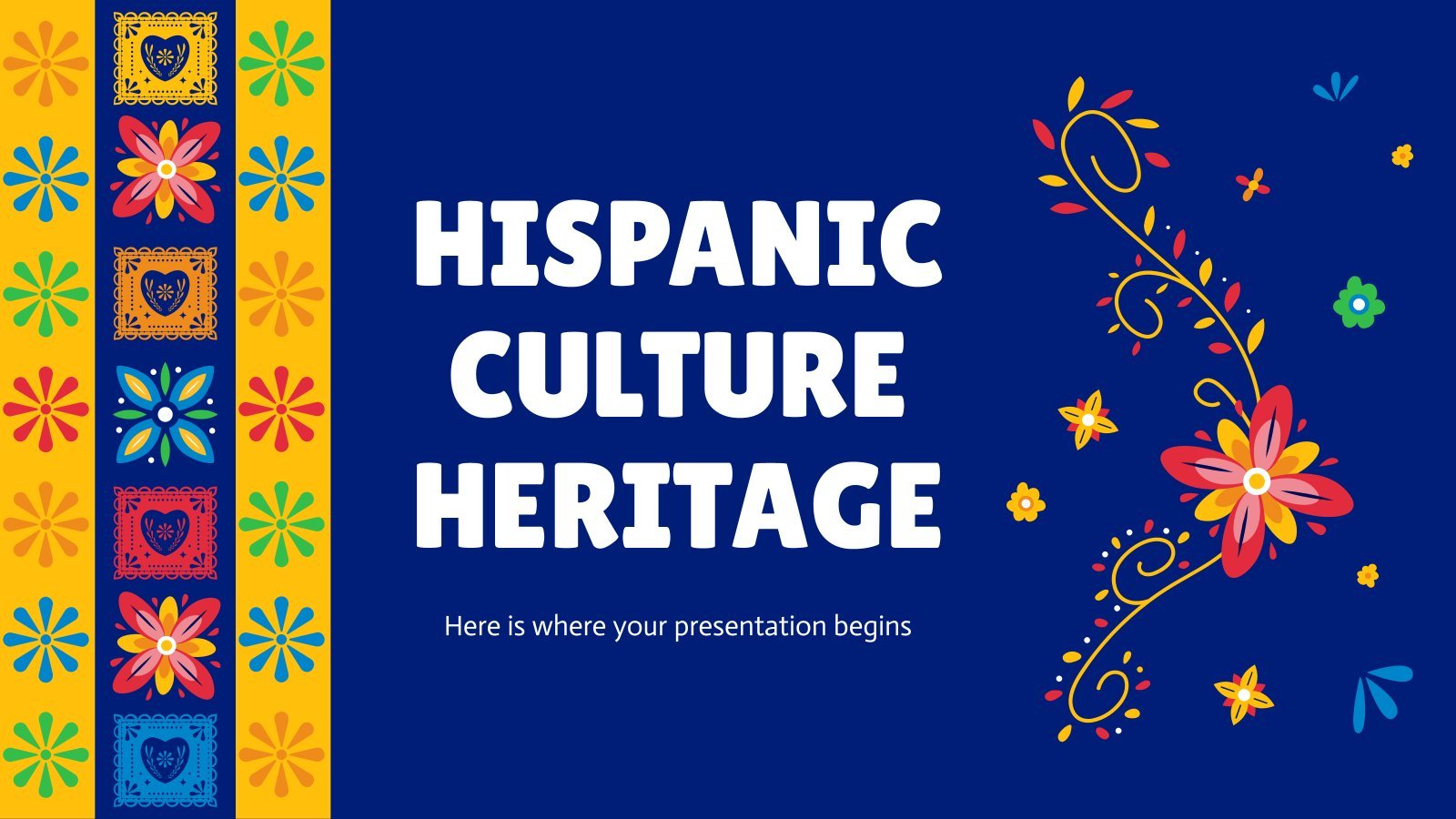How to Create an Effective Dissertation Presentation
For many students, the task of writing a lengthy dissertation is so daunting that they forget about the need for Dissertation Presentation! Amidst all the hard work of researching and writing, students in some courses still need to prepare for a high-quality presentation that will help them earn top marks. This article will help you prepare and give you some essential tips for success.

The Purpose of Dissertation Presentation
There are two main types of Dissertation Presentation that are normally encountered in UK universities:
Mid-Research Presentations
Students will often be asked to present their dissertation work at a mid-point in their research. These presentations are usually made to a panel comprised of various faculty members from your department. In addition, they are sometimes structured as a postgraduate seminar, in which fellow students also attend. Both faculty and students can pose questions. The purpose of these Mid-Research Dissertation presentations is to provide students with an opportunity to demonstrate their progress and identify any weak areas that need to be addressed.
Assessment Presentations
Students are also sometimes required to make a Dissertation Presentation as part of their overall assessment . This is a much more formal presentation than the Mid-Research one, and it is usually open only to the student, examiners and the research supervisor. During an Assessment Dissertation Presentation, the student is required to present a summary of their research and results. They will then be asked questions by the examiners in a somewhat lengthy oral examination. The purpose of this Dissertation Presentation is to assess the student’s original research project and test its scholarly validity.
Differences in Undergraduate and Masters Presentations
Dissertation Presentations may be required at both Undergraduate (Bachelors) and Postgraduate (Masters) levels. The key difference between these levels is the length and degree of originality expected. Postgraduate Dissertation Presentations will normally be longer than Undergraduate Presentations, and they will demonstrate a greater degree of critical engagement with the subject matter. They will also demonstrate some degree of original thinking. By contrast, most Bachelors Dissertation Presentations will be shorter in length and will only require a thorough knowledge of the topic rather than an original scholarly contribution of any kind.
What to Include
- Broad subject area – What subject area of your discipline does your work fall into?
- Narrow topic area – Within this subject area, what is your specific topic? (This may be simply an expanded discussion of your research title).
- Relevant Existing Studies – What studies have already been done on your specific topic? What are their strengths and weaknesses? How does your work fit among them?
- Methodology and Philosophy – What methodology have you chosen to conduct your research? Is there a specific philosophical context? Why is this a good approach?
- Project Resources – If this is a Mid-Research Presentation, what resources do you require to complete the project? Furthermore, have you identified likely sources of funding, or do you need any difficult-to-acquire materials?
- Case Studies – If you’ve conducted practical fieldwork or lab research, why did you choose these cases or projects? How are they the best choices for researching your topic?
- Research Results – If this is a Dissertation Presentation for Assessment, note the results of your research in detail. Relate these back to your theoretical framework and discuss how the results support or contradict existing studies.
How to Prepare for your Dissertation Presentation
The best way to prepare for your Dissertation Presentation is to review your work carefully. Take notes of the key decisions you have made throughout your research and the scholarly literature that supports these choices. Make sure that you have a thorough understanding of the scholarly context of your research, which should have been achieved in your early research stages.
Once your content has been written, you should create a PowerPoint presentation to use during your talk. Don’t forget the slides should be informative but not wordy – keep bullet points concise and use pictures sparingly. Make sure that you rehearse your presentation several times.
What Sort of Questions to Prepare For Dissertation Presentation
The questions you will face in a Dissertation Presentation are designed to test your knowledge of the subject area and your awareness of the context of your work. You will be asked questions to determine how well you understand the potential criticisms of your project, and how well you are able to defend this. Therefore, remember to reference established scholars and existing research.
You might be asked about the specific choices you’re made with regard to methodology and case studies, and how you accounted for any possible inaccuracies in your resulting data. Similarly, examiners frequently ask students what they would do differently if they were starting the same project again.
You should also be prepared to answer questions about the ways your research might be applied within your field, and how it might be supplemented in future. This is an effective way for examiners to assess the originality of your research, and consider its potential impact on your subject area.
How to Earn a High Mark
Much of your dissertation mark will come from the written work and the research project it represents. However, a good Dissertation Presentation will help make a strong case for a good overall mark, whereas a weak Presentation will confirm any doubts in the examiners’ minds. As such, here are a few key areas for success:
- Good Presentation Skills. As with any Presentation, it is important to speak clearly and concisely. Stand still and look your audience in the eye, and try not to rely too much on notes. Be sure to keep breathing and don’t rush your words!
- Knowledge of the Topic. If you truly have a good understanding of your topic you will be likely to do very well. Remember, much of the Dissertation Presentation is designed simply to test your knowledge. If you’ve kept pace with your reading assignments and practical work you should have no problem answering any questions that are posed to you.
- Professional Behaviour. Stay calm and focused during your Presentation, and answer any questions with objectivity and professionalism. Don’t be drawn into debates, but instead offer references to other scholars whose work supports your own agenda.
- Take Your Time . Many students make the mistake of rushing through their material and answering questions too quickly. This doesn’t give the audience a chance to thoroughly understand the quality of your work. Furthermore, it risks leaving out essential information and neglecting to demonstrate the depth of your research.
Want to Get your Dissertation Accepted?
Discover how we've helped doctoral students complete their dissertations and advance their academic careers!
Join 200+ Graduated Students

Get Your Dissertation Accepted On Your Next Submission
Get customized coaching for:.
- Crafting your proposal,
- Collecting and analyzing your data, or
- Preparing your defense.
Trapped in dissertation revisions?
How to create a dissertation proposal defense powerpoint (+example), published by steve tippins on june 21, 2022 june 21, 2022.
Last Updated on: 22nd May 2024, 04:14 am
As part of the dissertation process, you will need to create a dissertation proposal defense PowerPoint to present a summary of the plan for your study. You will need to show how important your study is and how it is useful.
When creating the PowerPoint, keep in mind that you need to make sure all of your audience can understand all aspects of your study. The exact content for the defense PowerPoint varies by college, discipline and department, so it is important that you discuss with your committee chair about the requirements. However, we will give some general guidelines that apply to most institutions.

The defense typically takes 20‐30 minutes. You should keep the timeframe in mind as you consider the information you will have in your presentation.
Except for aspects of your presentation, such as the research question(s) or hypothesis(es), do not just read the slides. Instead, explain or expand on what is on the slides. To ensure you keep within the timeframe, practice narrating your PowerPoint presentation.
Although the APA manual does not provide guidelines for creating a PowerPoint presentation, you will need to follow some of the APA style guidelines within your PowerPoint.
For example, provide in-text citations for quotes, paraphrases, images, graphs, and other information that should be cited. Also, you will need to provide a list of pertinent references.
The following are other format requirements for the slides :
- Create 17-20 slides.
- Do not provide a lot of information. Be concise and write a few sentences (approximately 1-7 on each slide).
- Because your slides will contain only a small amount of information, any extra information that you want to touch on should be put in the notes section of the PowerPoint.
- Write the information in your slides for visual appeal and optimum communication, using a legible font size.
- You can use graphics and images to enhance and reinforce the information. However, ensure that they do not distract from your information.
- You can use bullet points but keep them to a minimum of 3-4 for each listing.
Example Dissertation Proposal Defense PowerPoint Template

The dissertation proposal will consist of three chapters, which you will be providing information on in the presentation. Although the contents and order of the contents may vary, there are some basic parts of the proposal that are usually required.
The following is a breakdown of the usual contents that are included in the presentation. Each of these headings below represents the titles of each slide. The information below the headings is the type of content you will need to provide.
Title (1 slide) :
- Dissertation’s Title
- Department of Program of Study/Name of University
- Chair and Committee Members
Statement of the Problem (1 slide):
- Provide the problem that your dissertation will address.
Purpose of the Study (1 slide):
- Provide what the study will do relative to the issue(s) defined in the statement of the problem.
Significance of the Study (1 slide):
- Provide the main argument of why the solution to the problem that you propose is important.
Research Question(s)/Hypothesis(es ) (1 slide):
- Provide the research question(s) or hypothesis(es) relevant to your field of study, written exactly as it is in your dissertation proposal.
The Literature Review (2 slides):
- These slides should consist of a coherent, organized overview of the main literature that frames your study’s problem, and the gap in literature that your study will address. Make sure that you include the sources.
Theoretical/Conceptual Framework (1 slide):
- This slide should consist of the theoretical/conceptual framework that will help you make sense of the phenomenon that you will investigate.
Research Design (1 slide):
- Provide the framework for the methods of data collection and data analysis. Indicate whether the study will be quantitative or qualitative.
Sample and Population (1 slide):
- Provide the population that refers to the entire group that you will draw conclusions about, and the sample that refers to the specific group that you will collect data from.
Data Collection (1 slide):
- Provide the methods by which you will obtain the data. If the research design is quantitative, provide methods such as correlation and regression, mean, mode and median or others. If the design is qualitative, provide methods such as, interviews, questionnaires with open-ended questions, focus groups, observation, game or role-playing, case studies, or others.
Data Analysis (1-2 slides):
- This slide should contain the process you will use to understand, gather, compile, and process the data you will obtain.

Limitations (1 slide):
- In this slide, explain the nature of the limitations and how they will be overcome during your research.
Delimitations (1slide):
- Provide the characteristics that describe the boundaries of your study and limit the scope, such as sample size, geographical location, population traits, or others.
References (1-2 slides):
- Only provide those sources that you referred to in the presentation. Do not provide all the sources that you have in your dissertation proposal.
Thank You/Questions (1 slide):
- Use this final slide to thank your committee and to request questions from them.
Note : For information about citing your references, refer to Chapters 9 and 10 of the APA Manual 7 th edition.
For instructions on how to create a PowerPoint, see How to Create a Powerpoint Presentation .
View this video for “ Tips and Tricks for your Proposal Defense Day Presentation ”
You can find several templates of students’ Dissertation Proposal Defense presentations online by searching for “Dissertation Proposal Defense PowerPoint.” You can also find one at this webpage .
Steve Tippins
Steve Tippins, PhD, has thrived in academia for over thirty years. He continues to love teaching in addition to coaching recent PhD graduates as well as students writing their dissertations. Learn more about his dissertation coaching and career coaching services. Book a Free Consultation with Steve Tippins
Related Posts

Dissertation
Dissertation memes.
Sometimes you can’t dissertate anymore and you just need to meme. Don’t worry, I’ve got you. Here are some of my favorite dissertation memes that I’ve seen lately. My Favorite Dissertation Memes For when you Read more…

Surviving Post Dissertation Stress Disorder
The process of earning a doctorate can be long and stressful – and for some people, it can even be traumatic. This may be hard for those who haven’t been through a doctoral program to Read more…

PhD by Publication
PhD by publication, also known as “PhD by portfolio” or “PhD by published works,” is a relatively new route to completing your dissertation requirements for your doctoral degree. In the traditional dissertation route, you have Read more…

Princeton Correspondents on Undergraduate Research
How to Make a Successful Research Presentation
Turning a research paper into a visual presentation is difficult; there are pitfalls, and navigating the path to a brief, informative presentation takes time and practice. As a TA for GEO/WRI 201: Methods in Data Analysis & Scientific Writing this past fall, I saw how this process works from an instructor’s standpoint. I’ve presented my own research before, but helping others present theirs taught me a bit more about the process. Here are some tips I learned that may help you with your next research presentation:
More is more
In general, your presentation will always benefit from more practice, more feedback, and more revision. By practicing in front of friends, you can get comfortable with presenting your work while receiving feedback. It is hard to know how to revise your presentation if you never practice. If you are presenting to a general audience, getting feedback from someone outside of your discipline is crucial. Terms and ideas that seem intuitive to you may be completely foreign to someone else, and your well-crafted presentation could fall flat.
Less is more
Limit the scope of your presentation, the number of slides, and the text on each slide. In my experience, text works well for organizing slides, orienting the audience to key terms, and annotating important figures–not for explaining complex ideas. Having fewer slides is usually better as well. In general, about one slide per minute of presentation is an appropriate budget. Too many slides is usually a sign that your topic is too broad.

Limit the scope of your presentation
Don’t present your paper. Presentations are usually around 10 min long. You will not have time to explain all of the research you did in a semester (or a year!) in such a short span of time. Instead, focus on the highlight(s). Identify a single compelling research question which your work addressed, and craft a succinct but complete narrative around it.
You will not have time to explain all of the research you did. Instead, focus on the highlights. Identify a single compelling research question which your work addressed, and craft a succinct but complete narrative around it.
Craft a compelling research narrative
After identifying the focused research question, walk your audience through your research as if it were a story. Presentations with strong narrative arcs are clear, captivating, and compelling.
- Introduction (exposition — rising action)
Orient the audience and draw them in by demonstrating the relevance and importance of your research story with strong global motive. Provide them with the necessary vocabulary and background knowledge to understand the plot of your story. Introduce the key studies (characters) relevant in your story and build tension and conflict with scholarly and data motive. By the end of your introduction, your audience should clearly understand your research question and be dying to know how you resolve the tension built through motive.

- Methods (rising action)
The methods section should transition smoothly and logically from the introduction. Beware of presenting your methods in a boring, arc-killing, ‘this is what I did.’ Focus on the details that set your story apart from the stories other people have already told. Keep the audience interested by clearly motivating your decisions based on your original research question or the tension built in your introduction.
- Results (climax)
Less is usually more here. Only present results which are clearly related to the focused research question you are presenting. Make sure you explain the results clearly so that your audience understands what your research found. This is the peak of tension in your narrative arc, so don’t undercut it by quickly clicking through to your discussion.
- Discussion (falling action)
By now your audience should be dying for a satisfying resolution. Here is where you contextualize your results and begin resolving the tension between past research. Be thorough. If you have too many conflicts left unresolved, or you don’t have enough time to present all of the resolutions, you probably need to further narrow the scope of your presentation.
- Conclusion (denouement)
Return back to your initial research question and motive, resolving any final conflicts and tying up loose ends. Leave the audience with a clear resolution of your focus research question, and use unresolved tension to set up potential sequels (i.e. further research).
Use your medium to enhance the narrative
Visual presentations should be dominated by clear, intentional graphics. Subtle animation in key moments (usually during the results or discussion) can add drama to the narrative arc and make conflict resolutions more satisfying. You are narrating a story written in images, videos, cartoons, and graphs. While your paper is mostly text, with graphics to highlight crucial points, your slides should be the opposite. Adapting to the new medium may require you to create or acquire far more graphics than you included in your paper, but it is necessary to create an engaging presentation.
The most important thing you can do for your presentation is to practice and revise. Bother your friends, your roommates, TAs–anybody who will sit down and listen to your work. Beyond that, think about presentations you have found compelling and try to incorporate some of those elements into your own. Remember you want your work to be comprehensible; you aren’t creating experts in 10 minutes. Above all, try to stay passionate about what you did and why. You put the time in, so show your audience that it’s worth it.
For more insight into research presentations, check out these past PCUR posts written by Emma and Ellie .
— Alec Getraer, Natural Sciences Correspondent
Share this:
- Share on Tumblr


Thesis Defense PowerPoint: Presentation Structure and Slides Content
Last updated on July 13th, 2024
Writing a thesis is as important as defending it. The goal is not only to present one of the largest papers you ever worked on throughout the university years but also to build a strategy and create a presentation that answers all questions the audience might have.
Of course, today, this task is largely facilitated by modern technologies. PowerPoint and other programs let you create a perfect background for your defense. It helps you stay in control of the whole presentation and also includes all the important numbers and facts for the audience.

Creating a presentation for a thesis is not a piece of cake. Many students would say that they’d rather write a paper than work on a PowerPoint presentation. Since it’s academic, it also has its requirements and specifics. Of course, companies where you buy college essays can help you with pptx files as well. Yet, knowing all dos and don’ts to add your own voice to the presentation can help you ace your defense.
That’s why we decided to analyze a few structure and content tips to help you author your thesis defense presentation and make sure you get a high grade. But let’s discuss best presentation-making practices first.
What Should You Know About Presentation Making?
Before you start working on a presentation, you have to understand the level and the needs of your audience. If we talk about a thesis defense presentation , you will present your research paper to people knowledgeable in your field. There is no need to translate terminology in this case.
Remember that your presentations should be simple and easy to read. If you basically copy-paste the text from your thesis to the slides, you’ll create a wall of words. This brings zero value. Instead, you should make every slide look engaging. This can be achieved if you set to add only key facts there.
There is a golden rule for presentation making. Create no more than 10 slides, take no more than 20 min, and use a font size of no less than 30 points. If you follow it for every academic work you need a presentation for, you’ll most likely get a high grade.

How to Structure Your Presentation and What Content to Include?
Here are some slide guidelines that you can consider for thesis defense presentations if you are wondering what to put in a research defense PowerPoint presentation:
1. Title Slide
The title page starts the whole presentation. It gives the audience an idea about the thesis and the course. Make it simple but appealing to highlight your scientific goals while following best academic practices.
A regular title slide page includes the thesis title, your name, university, and course details. Sometimes, it’s recommended to mention your advisor’s name on the title page as well. A title slide for a thesis presentation typically fits in one single slide.
2. Introduction of the Presentation
There is no surprise that your presentation will repeat the structure of your thesis to a certain extent. That means you’ll have to include a proper introduction into your presentation as well.
On that slide, you’ll need to mention the topic once again to keep the audience focused. Also, you’ll be giving more details about the questions and goals of your research. Your audience has to understand the purpose of the paper that is in front of them. You have to make it clear for them what things you are investigating in particular.
3. Acknowledgements Slide
Say Thank you to your collaborators for their help in putting this presentation together. You would also like to thank the teachers and professors who have helped you during the preparation of the thesis. Here is the place to do it. The acknowledgments slide can be added at the beginning of your presentation, or at the end.
4. Literature Review Slide
This slide is not a requirement. However, if you want to render literature sources that you used for your research based on certain criteria, this is the right place to do it. You can provide your audience with a brief understanding of the resources you relied on.
First of all, you can specify the theories that you consider in your research. Secondly, you can highlight weaknesses that exist in current research. In certain cases, it can help you avoid some uncomfortable questions throughout your defense.
5. Methodology Slide
Every thesis paper is written with its own methodology. It’s better to define the tools and methods right away to add a framework to your paper.
This part helps you narrow down your thesis, actually. This is a good thing because you won’t be asked questions pertaining to methods and information not used within your research.
How many slides you need to dedicate for the Methods content? The total number of slides will depend on the case, but typically you can consider from one to three slides. Slide 1 for Study Design, Slide 2 for Measures and Slide 3 for the Sample.
6. Presentation of Results
A few slides that show results should be one of the most comprehensive parts of your presentation. We highly advise you to check this section for all relevant numbers and findings to make it informative.
The thing is that thesis papers crafted by companies where you can order cheap essay online may not include formulas or calculations for diagrams and charts. Nevertheless, you’ll have to include infographics in your presentation.
This is why you have to request these calculations and formulas from your writers or ask them to work on the presentation as well. The point is that you have to know the depth of your research before you start defending it. These details are a part of your grade.
7. Discussion
The discussion part of your thesis presentation should focus on major findings from your research with regard to the discipline program and the goals of this study. You need to explain why you believe these findings are relevant and that much significant. Also, you may provide a few ideas on how your findings relate to what others found in the past. In addition, this is the part where you explain outstanding data or unusual results.
Remember that you are not limited by the number of slides in this section. However, you should keep in mind that only the most important ideas should go into the presentation.
8. Conclusions
To finalize your presentation, you must end it with a proper conclusion. Again, the best practices of presentation making suggest that you should include only key ideas in your slide. You need to convey the rest in a verbal message. This is a bit hard to do when it comes to the conclusion.
However, the goal is to answer the questions you set at the beginning. If you can prove or debunk your thesis statement, consider you have fulfilled your research mission.
9. Future Works or Future Directions slide
In order to make the most of this thesis presentation, future work will involve a number of different people. Some of these people will be responsible for creating the slides and videos that are used in the presentation, while others will be responsible for making sure that all the materials are up-to-date and error-free.
A timeline for this future work can be included in a future work slide, but what to include on this slide will depends on a variety of factors. In this slide, you can present the audience how you envision the future work of your research, who will be doing it, what resources are required, and the different milestones. Typically, a timeline slide design can be used in this section, but you can also use a multi-step slide to describe a list of points. This can be a final slide of presentation unless you want to give space for questions and answer section (Q&A).
Building your thesis is already a tough task. Presentation is considered an add-on that has recently become a must. That is why you should take it seriously and make sure you follow the tips above to ace your defense and wow everyone with your research.
Leave a Comment Cancel reply
Your email address will not be published. Required fields are marked *
Save my name, email, and website in this browser for the next time I comment.
Sign up to our newsletter
We will send you our curated collections to your email weekly. No spam, promise!
What is Genially?
Genially is a cloud-based platform for building interactive learning and communication experiences.
Product Overview
Explore Genially's authoring and content creation features.

What's New
Discover our latest product updates and releases.

Discover how teams use Genially for eLearning, Marketing, and Communications.
K12 Schools
Explore how teachers use Genially to bring interactive learning to the classroom.
Higher Education
Discover how Learning Design teams and Faculty use Genially to build interactive courses.
Contact Sales
START CREATING
Build interactive images
Discover how to make interactive visuals and graphics.
Create interactive slides
Engage your audience with interactive slides and presentations.
Make interactive infographics
Learn how to design interactive data visualizations and diagrams.
More formats
From resumes to reports, make any kind of content interactive.
eLearning templates
Interactive resources for eLearning and corporate training courses.
K12 teaching templates
Interactive classroom resources for primary and secondary education.
Gamification templates
Escape games, quizzes, and other game-based learning activities.
Marketing templates
Interactive microsites, brochures, videos, and branding materials.
Explore all Genially templates
Browse over 1,500 pre-built designs. Save time and create professional interactive materials in minutes.

Explore Genially pricing and plans.

Plans for Teachers
Create interactive learning materials and use Genially in class with your students.

Free thesis defense presentation templates
Bring your research to life and impress the examining committee with a professional Thesis Defense Presentation template. Defend your final year project, Master’s thesis, or PhD dissertation with the help of free slides designed especially for students and academics.
Presentations
Higher education
All presentations
Pitch decks

Healthy living presentation

Agriculture presentation

Basic shapes presentation

Decades presentation

Psychology presentation

Digital projects presentation

January higher education academic calendar

Minimal presentation mobile

Justice presentation

Women's presentation

Ocean presentation

Nature presentation

Pollution presentation

Subject presentation

Academic presentation ii

Desktop workspace

Color and shapes presentation

Visual presentation

Digital presentation

Essential presentation mobile

Flow higher education thesis

Dynamic higher education thesis

Structured higher education thesis

Research project presentation

Health higher education thesis

Harmony higher education thesis

Digital higher education presentation

Balance higher education thesis

Higher education presentation

Audio tutorial

Modern presentation

Infographic presentation
What’s a thesis defense presentation?
As you approach the end of grad or postgrad studies, you’ll probably be required to deliver a thesis defense presentation. This takes place during the final semester and involves speaking about your thesis or dissertation in front of a committee of professors.
The word “defend” might sound intimidating, but it simply means answering questions about your work. Examiners want to see how knowledgeable you are about your field and if you can back up your arguments with solid and original research. Some departments invite students to a pre-defense, which is like a dress rehearsal for the main event.
If you’re defending your doctoral thesis or dissertation, the event will be more formal than at Master’s level. In some universities, this is called a PhD viva, which comes from the Latin viva voce, meaning “by live voice”. Basically, it’s time to speak about the 80 thousand words you’ve written! As well as your supervisor, the panel will usually include visiting academics from other institutions. If it’s an “open defense” it will be open to other students and members of the public.
The format varies between different universities, but a thesis defense usually starts with the candidate delivering a short presentation accompanied by slides. This is followed by a question and answer session with the panel.

How do I design slides for my thesis defense?
The secret to a good thesis defense presentation is a well-designed slide deck. This will act as a visual aid and starting point for the conversation. Structuring your points and illustrating them on the screen will help you present more confidently.
If the prospect of creating a thesis presentation from scratch is daunting, check out Genially’s free thesis defense templates. Each design has been created by professional graphic designers in collaboration with students and academic experts.
Choose from hundreds of examples with preset color palettes and easy-to-edit slides. In a few minutes you can outline the content of your thesis in an impressive visual format. No artistic skills required!
How should I structure a thesis presentation?
When you create a thesis defense presentation, the first thing to remember is that it should be short and concise. There’s no need to rewrite your thesis on the slides. Members of the committee will already be familiar with your work, having read the document prior to the event.
A thesis defense is a conversational, person-to-person event. Examiners don’t want to read large blocks of text on the screen. They want to hear you talking about your research with passion and insight.
With this in mind, your presentation should serve as a starting point or prompt for discussion. Think of your slides as cue cards: use short titles and keywords to remind you of what you want to say.
Make a good first impression by using a professional thesis defense presentation template with a consistent theme and attractive visuals. Go for a calm color palette and neutral style. The aim is to illustrate your points while keeping the committee focused on what you’re saying.
A thesis defense usually begins with an introductory presentation lasting 15 to 20 minutes, followed by discussion time. For a 20 minute presentation we recommend a series of about 10 slides.
Make sure to include an introduction slide or title page that lays out what you’re going to talk about. Next, move on to each part of your thesis. Outline the problem, background and literature review, your research question, methodology and objectives, findings, conclusions, and areas for future research.
A great thesis presentation should provide the panel with a summary of your research. For that reason, try to avoid dumping too much data or information onto your slides. Use Genially’s interactive infographics, diagrams and charts to highlight the most important points in an eye-catching visual format.
When it comes to the big day and defending your thesis, try to keep calm. Take a deep breath, introduce yourself to the committee and let your slides guide you. Your examiners will come armed with a list of questions, so the formal presentation will flow naturally into a Q&A.
How do I make a good final year project presentation?
If you’re an undergrad, you might be required to deliver a final year project presentation or dissertation presentation. It’s less formal than a graduate degree thesis defense, but the format is similar. You will be asked to present your research findings to faculty and peers with the help of slides. Your performance may count towards your final grade when you’re awarded your Bachelor’s degree.
A good presentation for a final year project should start with a title slide. At this point you should introduce your research question and explain why you chose the topic. If it’s a collaborative project, include a slide that introduces your teammates.
The core part of your presentation should cover your methodology, findings, conclusions, and scope for future research. Wrap things up by thanking your contributors and invite your audience to ask questions.
If you’re not sure how to make a final year project presentation, check out Genially’s free presentation slides for students. Choose from hundreds of professional templates that can be customized to any undergraduate or graduate project. With animated graphics and beautiful data visualizations, you can make standout slides in a matter of minutes.
If you’re submitting your presentation to your professor, try including interactive elements. Genially’s presentation builder allows you to embed online data, videos, audio, maps, PDFs, and hyperlinks in your slides. This can be a useful way to provide supporting evidence, sources, and additional documentation.
Templates for everything under the sun ☀️
Sign up to explore 2000+ interactive, animated designs in the Genially Template Gallery.

PhD Dissertation Defense Slides Design: Tips for designing the slides
- Tips for designing the slides
- Presentation checklist
- Example slides
- Additional Resources
Example Slides Repository
- Defense slides examples Link to examples dissertation defense slides.
Email me for questions and schedule an appointment

General tips for slide design
Use a plain background, for engineering, a plain, white background is generally ideal for dissertation proposals and defenses. don't pick a template that is too busy and distracting., , remember to add p age numbers, having page numbers in your slides will allow your advisors and peers to give comments. during your presentation, the committee members can use page numbers to reference specific slides for their questions. .

Less is more
Don't put too many words on one slide (no more than 20 words per slide, in general)., when words are inevitable, highlight the keywords in each sentence (see examples from i. daniel posen's and l. cook's slides).

Take advantage of animations
Use animations to explain complicated ideas in figures, tables, etc. you can use different slides instead of the animation functions in ms powerpoint; it will avoid overlapping text boxes or pictures when converted to pdf. , below is an example from c. kolb's defense slides. by a step-by-step revealing process, kolb was able to explain each detail without the distraction of other results. .

Write down your notes
Write down your notes with either bullet points or full sentences as a script. this can help you to remember what you want to say during your defense. when you are practicing, you won't have to come up with new things to say every time and won't forget what you planned to talk about. .

Example 1: slide with notes - exact words to say (C. Mailings 2017) Example 2: slide with notes - bullet points (I. D. Posen 2016)
Be smart about the title of each slide
Use descriptive language to summarize the key point of the slide, and avoid using vague terms or the same title for several slides that have different contents..

- << Previous: Start
- Next: Presentation checklist >>
- Last Updated: Jan 9, 2024 11:18 AM
- URL: https://guides.library.cmu.edu/c.php?g=883178
Free Dissertation Google Slides Themes And Powerpoint Templates

Free Professional Thesis PowerPoint Templates
Download free professional thesis powerpoint templates & google slides.

Free Professional Thesis PowerPoint Templates is a complete slide deck to showcase final thesis research. It is an easy-to-use set of slides with creative layouts and formats to keep your audience engaged. This free template for professional thesis will help engage and guide viewers through your thesis activities. These slides outline thesis and research data using diagrams, charts, and meaningful graphic contents. This presentation is also available as an editable Google Slides Themes.
This professional thesis template includes 21 slides to create a succinct and convincing final thesis presentation . These PowerPoint templates cover every aspect of your thesis, from the introduction and literature review, to methods, analysis, and reports. You can download this free PowerPoint Presentation template and customize it with your thesis content and related information. Moreover, change PowerPoint background images, color theme, and animate slides in few quick steps.
The Free Professional Thesis PowerPoint template provides a structure for presenting your research and conclusions based in educational best practices. The diagram and chart templates are available to include factual data and support statements with evidence. These PowerPoint templates will effectively communicate argumentative thesis statements using statistical data. This presentation includes slides for the following table of contents:
- Introduction: State the aim and objectives of thesis. It also covers the literature review to evaluate current situation.
- Purpose: It is a thesis statement focusing on the scope of work
- Method: The information about tools used to conduct research
- Statistical Analysis: Presentation of data in graphs and charts
- Results: Report the findings of research and comments on results
- Discussion: Compilation of purpose, literature review, and latest findings
- Conclusion: Closing thoughts on topic
- Reference: Contain reference to all resources for thesis work
An academic thesis is the demonstration that the student has acquired the knowledge to become a professional and researcher, able to create new knowledge in their field of expertise . However, presenting a thesis defense is hard as there are lots of information that needs to be condensed and diagrammed to transmit the proper message. Sometimes important information in research slips away while creating a presentation. The SlideModel PowerPoint template of professional thesis offers an outline to create compelling presentation. In this way, presenter can focus on adding information and data. The PowerPoint thesis template will take care of the presentation design. Alternatively, check our collection of thesis PowerPoint templates .
- 100% Editable PowerPoint Templates & Google Slides.
- Compatible with all major Microsoft PowerPoint versions, Keynote and Google Slides.
- Modern 16:9 Aspect Ratio.
- Scalable Vectorial PowerPoint Shapes and PowerPoint Icons.
- Instant Access and Download.
- New Templates every week.
Google Slides Preview
Our PowerPoint Templates are compatible with Google Slides. Take the most of every platform using the tool you like.

Newly Launched - AI Presentation Maker

AI PPT Maker
Powerpoint Templates
Icon Bundle
Kpi Dashboard
Professional
Business Plans
Swot Analysis
Gantt Chart
Business Proposal
Marketing Plan
Project Management
Business Case
Business Model
Cyber Security
Business PPT
Digital Marketing
Digital Transformation
Human Resources
Product Management
Artificial Intelligence
Company Profile
Acknowledgement PPT
PPT Presentation
Reports Brochures
One Page Pitch
Interview PPT
All Categories

Dissertation Presentation Powerpoint Presentation Slides
Introducing our dissertation presentation PowerPoint presentation slides. Present the introduction to your thesis with the help of this research exhibiting PowerPoint deck. This thesis presentation PPT theme has a slide that contains the literature review. Utilizing this assignment plan PPT layout will help you in displaying the hypothesis of your dissertation. This readymade research analysis PowerPoint design contains slides which help you present the statistical analysis. Assimilating this particular practical representation PPT theme allows you to present your conclusions and findings with charts and diagrams. This project dissertation PowerPoint creative set contains a slide for the list of references. Selection of this research work PowerPoint template helps you showcase your comparative research. This practical project management PPT deck lets you make required variations to icons and colors. Choose this thesis article display PowerPoint design to display organization and assurance. Download our dissertation ppt slides to avail the benefits of perfection.

- Add a user to your subscription for free
You must be logged in to download this presentation.
PowerPoint presentation slides
Presenting our dissertation presentation PowerPoint presentation slides. This PowerPoint design contains forty three slides in it which can be completely customized and edited. It is available for both standard as well as for widescreen formats. This PowerPoint template is compatible with all the presentation software like Microsoft Office, Google Slides, etc. You can download this PPT layout from below.

People who downloaded this PowerPoint presentation also viewed the following :
- Business Slides , Flat Designs , Strategic Planning Analysis , Complete Decks , All Decks , Process Management , Strategic Management , General
- Dissertation Presentation ,
- Essay Presentation ,
- Thesis Presentation
Content of this Powerpoint Presentation
Dissertation presentation powerpoint presentation slides with all 43 slides:.
Give a big boost to your earnings with our Dissertation Presentation Powerpoint Presentation Slides. They enable you to haul it in.

Ratings and Reviews
by Corey Patterson
July 9, 2021
by Dante Wells
July 8, 2021
by Samuel Bulti
March 15, 2020

Got any suggestions?
We want to hear from you! Send us a message and help improve Slidesgo
Top searches
Trending searches

suicide prevention
9 templates

49 templates

grandparents day
10 templates

16 templates

7 templates

hispanic heritage month
21 templates
Essay Presentation templates
Once upon a time in the land of student essays, our templates for google slides and powerpoint emerged as the ultimate sidekick. with designs that turn your late-night caffeine-fueled ideas into visual gems, these templates help you ace presentations with a dash of creativity and a sprinkle of style..
- Calendar & Weather
- Infographics
- Marketing Plan
- Project Proposal
- Social Media
- Thesis Defense
- Black & White
- Craft & Notebook
- Floral & Plants
- Illustration
- Interactive & Animated
- Professional
- Instagram Post
- Instagram Stories

It seems that you like this template!
Premium template.
Unlock this template and gain unlimited access

Register for free and start downloading now
Language arts subject for high school: literary essay.
Download the Language Arts Subject for High School: Literary Essay presentation for PowerPoint or Google Slides. High school students are approaching adulthood, and therefore, this template’s design reflects the mature nature of their education. Customize the well-defined sections, integrate multimedia and interactive elements and allow space for research or group...

How to Write a Compare and Contrast Essay
Download the How to Write a Compare and Contrast Essay presentation for PowerPoint or Google Slides. The education sector constantly demands dynamic and effective ways to present information. This template is created with that very purpose in mind. Offering the best resources, it allows educators or students to efficiently manage...

Essay Writing Workshop
The first sentence of each paragraph must be a short brief of the idea you’re going to expose. Then, use connectors to develop the idea and give details. Using a variety of connectors and synonyms will give your text lexical richness. Every once in a while, describe a complicated concept...

Steps to Write an Essay Infographics
What a practical and beautiful template to teach how to write a good essay! With this presentation, facing the blank page will be a piece of cake. You will have at your disposal more than 30 slides that will make your work much easier. The infographics that you will find...

How to Write a Good High School Essay
Are you having trouble writing a good high school essay? Don't worry, this template has everything you need to get started! With a creative and fun design, you'll be able to explain the key principles of essay writing in an entertaining and compelling way. From researching and planning to structure...

Essay on the History of Brazil
Brazil became an independent nation in 1822, but of course there were many things that happened before that. The history of Brazil is an enthralling topic, and you might have chosen it for your essay. Then, choose this template too! Since its filler text is written in Portuguese, it comes...

Indian Culture and Traditions Essay
If you're passionate about researching other cultures for class, or you've been curious and want to capture what you've learned in a presentation that demonstrates all the work you've done, this template is perfect! It's heavily influenced by the vibrant colors of typical Indian fabrics, which will draw the eyes...

Writing an Advantages and Disadvantages Essay
Download the Writing an Advantages and Disadvantages Essay presentation for PowerPoint or Google Slides. The education sector constantly demands dynamic and effective ways to present information. This template is created with that very purpose in mind. Offering the best resources, it allows educators or students to efficiently manage their presentations...

How to Write a Quality Essay Workshop
Download the How to Write a Quality Essay Workshop presentation for PowerPoint or Google Slides. If you are planning your next workshop and looking for ways to make it memorable for your audience, don’t go anywhere. Because this creative template is just what you need! With its visually stunning design,...

College Application Essays and Personal Statements - Language Arts - 12th grade
Download the "College Application Essays and Personal Statements - Language Arts - 12th grade" presentation for PowerPoint or Google Slides. High school students are approaching adulthood, and therefore, this template’s design reflects the mature nature of their education. Customize the well-defined sections, integrate multimedia and interactive elements and allow space...

Turkish Culture and Traditions Essay
Turkish culture is one of the richest and most interesting in existence, and you have the opportunity to convey it with this presentation that perfectly reflects the traditional style of this country! Make your audience travel there without leaving their seat. With this presentation specially designed for writing an essay,...

IMAGES
COMMENTS
PhD Dissertation Defense Slides Design: Start - CMU LibGuides
How To Do a Proper Thesis Defense with a PowerPoint ...
How to create a thesis defense presentation that shows ...
Dissertation PowerPoint Templates
Free Thesis Defense Google Slides and PowerPoint Templates
How to Create an Effective Dissertation Presentation
How to Start a Thesis Defense Presentation
PhD Dissertation Defense Slides Design: Example slides
How to Create a Dissertation Proposal Defense ...
PhD Dissertation Defense Slides Design: Presentation checklist. Start; Tips for designing the slides; Presentation checklist; Example slides; Additional Resources; Technical checklist. 1. Did you add page numbers? 2. Did you test animation and videos? 3. Did you check if the font sizes are too small, especially in tables and figures?
Preparing Your PowerPoint. Topic 3: Preparing for Defense. In this activity, you will draft your PowerPoint for your proposal defense. During your defense you will typically have 10-15 minutes for your presentation. There are approximately 9-12 slides. They have read the study, so focus more on findings and implications, less on literature.
How to Make a Successful Research Presentation
Final Dissertation Defense PowerPoint Template
The PhD Dissertation PowerPoint Template provides a professional structure and layouts designed for dissertation presentations. A dissertation is the work submitted to support the conclusion of an academic degree or professional qualification, presenting the author's research and findings in an area of study. ...
Thesis Defense PowerPoint: Presentation Structure and ...
PhD Dissertation presentation template
Free thesis defense presentation templates
For engineering, a plain, white background is generally ideal for dissertation proposals and defenses. Don't pick a template that is too busy and distracting. Remember to Add P age Numbers Having page numbers in your slides will allow your advisors and peers to give comments. During your presentation, the committee members can use page numbers ...
Example Dissertation Powerpoint Presentation Slide
Download our professional Dissertation powerpoint templates to prepare the coming presentation. Google Slides theme templates are also available for free download. 100% FREE! FULLY EDITABLE!
Free Professional Thesis PowerPoint Templates
PowerPoint presentation slides: Presenting our dissertation presentation PowerPoint presentation slides. This PowerPoint design contains forty three slides in it which can be completely customized and edited. It is available for both standard as well as for widescreen formats.
Basic Customizable PhD Dissertation Presentation. Free Google Slides theme, PowerPoint template, and Canva presentation template. Being formal and creative can be your main highlights when presenting your phD if you use this modern presentation template for your defense. The design is like a canvas you can use to give life to your investigation ...
Transform your presentations into captivating visuals that make your ideas shine. Perfect for ideas related to essays Free Easy to edit Professional. ... Plan Calendar & Weather Background Research Pitch Deck Infographics Planner Notebook A4 Portfolio Lesson School Meeting Newsletter Thesis Defense Project Proposal Editable templates. By industry.